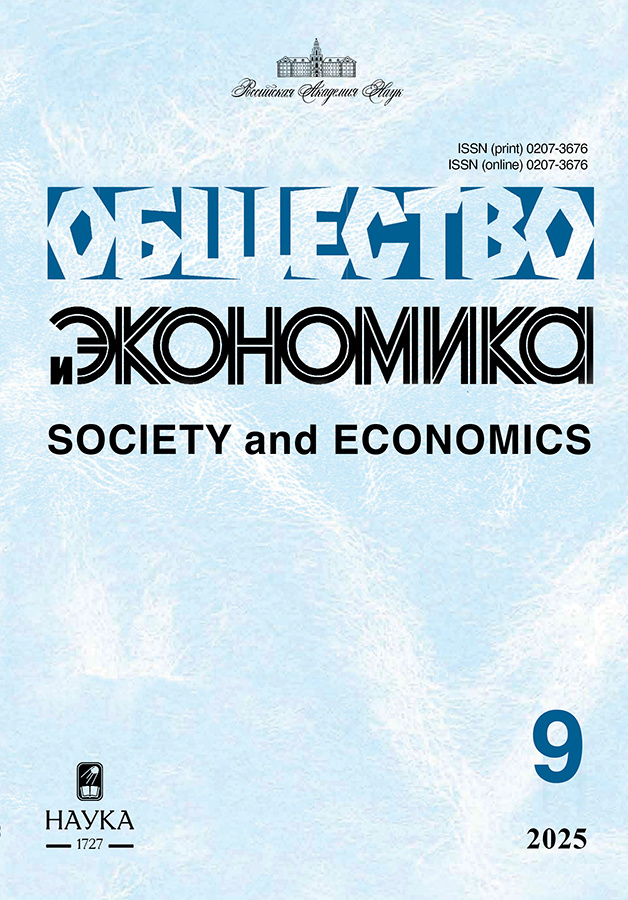Society and Economics
ISSN (print): 0207-3676
Media registration certificate: No. 0110199 dated 05/05/1999
Founder: Russian Academy of Sciences
Editor-in-Chief: Kokhno Pavel Antonovich
Number of issues per year: 12
Indexation: RISC, list of Higher Attestation Commissions, CrossRef
The journal "Society and Economics" was established on the initiative of the Russian Academy of Sciences and in accordance with the decree of the Council of the International Association of Academies of Sciences (Decree of the Council of IAAS No. 37 of November 17, 1995).
The presidents of the member academies of the International Association of Academies of Sciences (IAAS) issued a Memorandum of Association for the publication of the journal “Society and Economy” as an international journal and signed the Charter of the journal. From the pages of the journal, the presidents of Armenia, Belarus, Vietnam, Georgia, Kyrgyzstan, Moldova, Russia, Ukraine, the Prime Minister of the State Council of the People’s Republic of China, and the Prime Minister of Armenia addressed the readers in different years. Representatives of the academies of sciences of Azerbaijan, Armenia, Belarus, Georgia, Kazakhstan, Kyrgyzstan, Moldova, Russia, Tajikistan, Turkmenistan, Uzbekistan, Ukraine, as well as the National Center for Social and Human Sciences of the Socialist Republic of Vietnam were delegated to the editorial board of the journal.
In accordance with the Charter of the journal, in addition to publishing the journal, its international editorial board and the editorial team of the journal, with the active participation of scientists from the CIS countries, carry out research, as well as scientific and organizational work on the publication of monographs of international authors' teams (a total of 5 such monographs have been published, and international scientific conferences have been held).
The journal contributes to the development of multilateral scientific ties between scientists, including those working in the CIS countries, which has a positive impact on the formation of mutual understanding, and allows the exchange of practical experience of socio-economic development. Besides an international journal of historical studies, this is the only international journal of the CIS countries, dedicated to social issues.
The journal “Society and Economy” welcomes innovative approaches that are debatable in nature, providing an opportunity for famous scientists and young specialists to report on:
- economic models in the modern world;
- methods of stabilizing the economy in a crisis;
- problems of balance in the economy;
- modern concepts of economic growth;
- problems of the political organization of society in post-socialist countries.
Edição corrente
Nº 9 (2025)
- Ano: 2025
- Artigos: 6
- URL: https://rjsocmed.com/0207-3676/issue/view/13992
Edição completa
THEORETICAL ECONOMICS
Luxury consumption in the 21st century: growth drivers, risk factors, and sustainable development strategies
Resumo
 5-18
5-18


MANAGEMENT
Contractual relations and the development of the institution of a qualified customer
Resumo
 19-29
19-29


Methodological approach to implementing visual knowledge management models in a consulting company
Resumo
 30-46
30-46


FINANCIAL POLICY
Current Trends in the Management of Cash Holdings in Russian Public Companies in the Context of the Precautionary Motive
Resumo
 48-57
48-57


REGIONAL DEVELOPMENT
Investment Climate in the Region: A Comprehensive Approach to Analysis and Assessment
Resumo
 58-72
58-72


WORLD ECONOMY
Private higher education in China: evolution, role, and prospects
Resumo
 73-87
73-87















